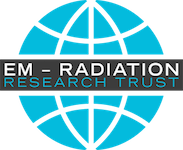‘DEAR DR. FOX: One often-overlooked cause of tachycardia (rapid heart rate) in animals, as well as of other heart arrhythmias and high blood pressure, is wireless radiation in the environment — or attached to an animal’s body, like GPS trackers. This is because the voltage-gated calcium channels (VGCCs) in cell membranes are affected by these human-made frequencies.
Medications such as amlodipine can reduce blood pressure in affected animals, but making the environment safe is the better option since long-term use of such drugs can impair kidney and liver function. The heart, brain and reproductive organs have the most VGCCs, so they are the most affected by non-ionizing radiation. Aside from heart issues, such radiation can deform sperm, harm DNA, cause inflammation, suppress the immune system, disrupt hormone production and cause sleep disturbances — to name just a few of the problems.
Pet parents should make sure their animal’s beds or resting areas aren’t anywhere near routers (people shouldn’t be, either). If people aren’t willing to simply use ethernet cords to connect to the internet, they should at least turn routers off when not in use. Don’t use or keep cellphones and tablets near animals (or children).
These radiation levels are not safe for anyone’s health. On Aug. 13, the D.C. Court of Appeals ruled that the 30-year-old FCC guidelines on this issue were not based on “reasoned decision making” (Environmental Health Trust et al. vs. FCC). Obviously, when one-third of the population is being made sick from wireless radiation, the guidelines need to be changed! Please look on ehtrust.org for more information on the lawsuit, as well as on the adverse effects of radiation on people, animals and the environment. — N. Van Dover, DVM
DEAR DR. VAN DOVER: Thank you for this warning; I hope readers will take your concerns to heart and address the risks of electronic devices in their homes. For more details, see the article on electropollution on my website (drfoxonehealth.com).
There is mounting scientific evidence that this problem is increasing as we get further into the “information age” of telecommunications and cybertechnology, with its electromagnetic fields, non-ionizing radiation and escalating energy demands. The electropollution generated globally may cause as much, if not more, harm to life on Earth than pesticides and other products of the “chemical age.”
Some forms of electromagnetic field exposure can, however, be therapeutic. For instance, pulsed electromagnetic field therapy is being used by the Veterinary Emergency Response Team at the University of California, Davis, to treat wild and domestic animals with forest fire burns and injuries. The beneficial effects of some energy frequencies affirm the reality of electro-sensitivity.’

